MSG stands for monosodium glutamate, which is the mix of salt and glutamate. Glutamate is an amino acid that is both naturally occurring and synthesized. Together as MSG, it’s used to add or enhance umami flavor in food.
What is umami? It’s the hard-to-describe “fifth taste,” alongside saltiness, sourness, bitterness and sweetness. It’s what makes things taste meaty, savory, substantive. In other words, it makes things taste better!
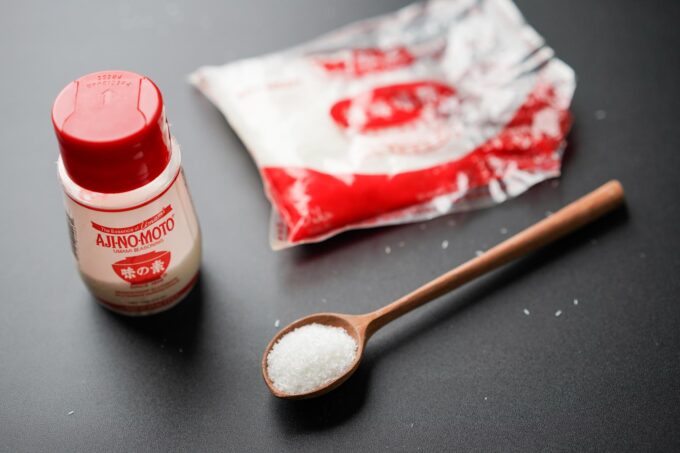
What foods contain MSG?
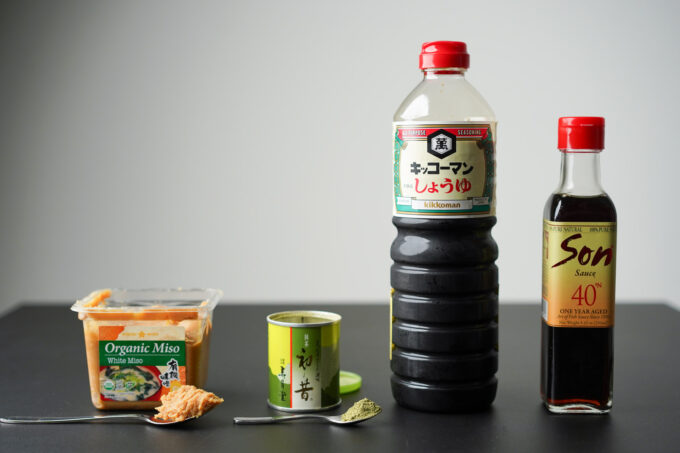
The following foods contain naturally-occurring glutamic acid (shown here with the amount) per 100g:
- Kelp: 230–3380 mg
- Seaweed: 550–1350 mg
- Marmite 1960 mg
- Vegemite: 1431 mg
- Fish sauce: 727–1383 mg
- Soy sauce: 400–1700 mg
- Parmesan cheese: 1200–1680 mg
- Roquefort cheese: 1280 mg
- Dried shiitake mushrooms: 1060 mg
- Oyster sauce: 900 mg
- Miso: 200–700 mg
- Green tea: 220–670 mg
- Anchovies: 630 mg
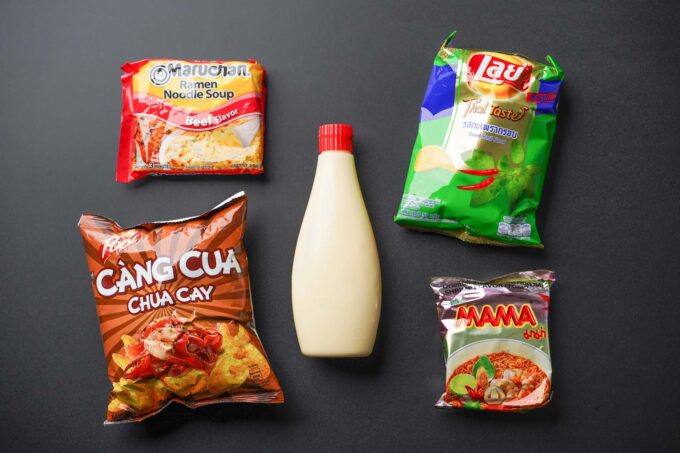
Here is a list of processed foods that contain manufactured MSG:
- Fast food (Kentucky Fried Chicken, Chick Fil-A)
- Snacks and chips (Doritos, Pringles)
- Frozen foods
- Canned soups (Campbell’s chicken noodle soup)
- Processed meats (hotdogs, sausage, beef jerky, pepperoni)
- Condiments (salad dressing, mayonnaise, ketchup)
- Instant noodles
- Dry seasoning packets (taco meat mix)
In western foods, MSG is treated like a chemical shortcut. The sure way to make processed foods yummy is to load them up with a bunch of sodium, sugar, fat, and you guessed it, MSG. Together, they take the place of the vibrancy and quality missing from fresh food.
We don’t only define sugar, fat or salt as merely “shortcuts” to deliciousness. They are staple ingredients we use to cook all manners of food. In Japan, MSG may be used as a condiment next to salt and pepper. Home cooks and restaurants are known to top stir fries, fresh fruits and other freshly made dishes with the stuff.
Just think of parmesan cheese or kombu seaweed–two natural sources of glutamate. We add parm to pasta to make it more delicious. MSG can be added to food in the same way except with one distinct advantage: It does not change the taste or color of the food, it only enhances it. You get the taste boost that comes with something like parmesan cheese without… well, the parmesan cheese. It’s alchemy!
What does MSG look like?
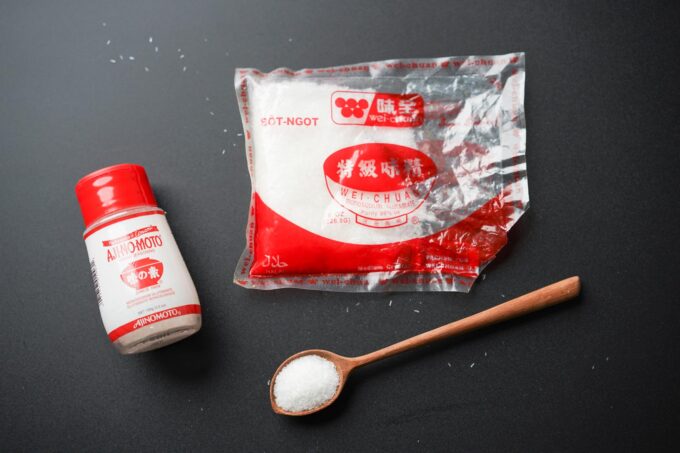
It resembles salt or sugar with a bit more of a crystalline nature, maybe a little more transparent. Sometimes the granules are chunky and rectangular or sometimes they are broken down to more of a flaky powder.
Where to buy MSG
You can find MSG in various brands in Asian markets or order online. It is more cost-effective (but not nearly as cute) to buy it by the bagful instead of the Ajinomoto Panda tabletop shaker bottle.
Side note: the US-made Ajinomoto is made from fermented corn glucose, as corn is the most abundant source of sugar here. In South America, they use sugar cane and in Asia, it’s usually cassava root.
Substitutes for MSG
If you cannot find MSG or have an aversion to it, feel free to leave it out. MSG is always optional in our recipes. To make up for it, you could try these substitutions:
- Add a bit of extra salt (to taste, of course)
- Beef stock or bouillon cube gets its flavor from glutamate, the key component of MSG. Beef bones are a great natural source of glutamate. Reduce beef stock to get a higher concentration glutamate.
- Soy sauce also contains glutamate
- Fermented soy sauce has natural glutamate
- Soy sauce made with hydrolyzed soy protein has added MSG
How does MSG work?
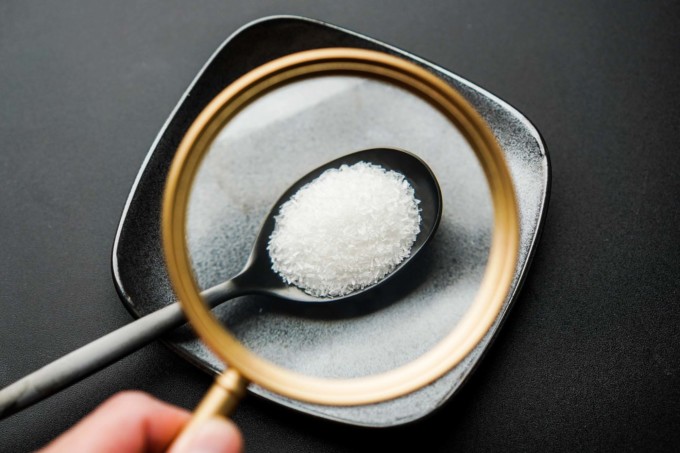
Glutamic acid is one of the most common amino acids in nature. It’s a “non-essential” amino acid which means your body produces it on its own. Weird fact: it is found in human breast milk. Less weird: it’s found naturally in tomatoes, parmesan cheese, dried mushrooms, and some fruits and vegetables.
Let’s get one thing straight. There is no chemical difference between naturally occurring glutamic acid and that which is manufactured. It’s possible that glutamic acid in MSG is more easily absorbed because it lacks the protection of protein molecules that need to be broken down. Perhaps this is akin to the way sugar in processed foods is more quickly absorbed than sugar from fruit.
Glutamic acid is an “excitatory neurotransmitter.” It stimulates nerve cells to relay a signal to your brain:
“Beep boop bop. Whoa, this is delicious!”
What does MSG taste like?
On its own, Daniel Holzman for Taste blog says MSG tastes, “like a mild salt without any unique quality.” That’s right, the lack of color or taste is one of its features. With food, Holzman goes on to describe it as a “round and rich mouthfeel designated ‘umami’.”
Health considerations
The FDA classified MSG as “generally recognized as safe,” or GRAS. Where GRAS status would pardon certain ingredients from the Food Additives Status List, MSG had to stay due to persistent controversies.
A word on FDA’s Food Additives Status List: Not every additive is listed as an additive. Once you go GRAS, you’re typically cleared from the list. Additives, as they are known herein, are harmful in large quantities and therefore must be tested and regulated. Therefore, keeping MSG on this list amongst additives like acetone for instance, is a statement in and of itself. Despite the FDA’s efforts to quell public fear, this inclusion quietly keeps the controversies alive.
As for its healthfulness, there is a whole mess of studies and research over the last few decades that have tried and failed to underpin MSG.
The prevailing assertion is that there is no sufficient evidence to support the “MSG symptom complex.” Self-ascribed sensitivity to MSG has also been questioned due to inconsistent data from a study in 2000 that tested subjects repeatedly.
“After another round of retests, only two of the original 130 had shown consistent reactions to MSG and not the placebo. But then, when they were tested again with MSG in food, their reactions differed – which cast doubt on the validity of self-described MSG sensitivity.” —BBC
Why is MSG controversial?
Despite the FDA’s efforts to put concerns to rest in 1995, the term “Chinese Restaurant Syndrome” persists in search engine results to this day. The FDA had long dismissed the term, calling it, “pejorative and not reflective of the extent or nature of the symptoms.”
It may shock you to know that in the mid-1930s to 1941, Campbell’s Soup Co. was the largest importer of MSG from Japan. Today, we gobble up MSG-laden Doritos and Pringles with no apparent symptoms. We don’t even think twice about it.
Yet, the taboo associated with MSG has food manufacturers finding near-formulas that achieve the same effect but avoid printing “monosodium glutamate” on their labels. Euphemisms like “hydrolyzed soy protein” and “autolyzed yeast” exist to this end as well.
In an episode of Parts Unknown (2016), Anthony Bourdain defiantly asserts, “You know what causes Chinese Restaurant Syndrome? Racism.”
Whether it is a symptom of internalized xenophobia, or an honest to goodness allergic reaction, we (and the scientific community for that matter) cannot say for certain. However the manner in which the pernicious idea had spread from one published letter in 1968 is a telltale sign that it was proliferated in part by a sort of viral mania not seen since.








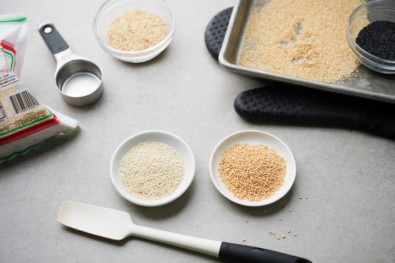

It is a necessity in Vietnamese cooking even down to the dipping sauces we use. And thank you for the mention of Vegemite. Australia thanks you!